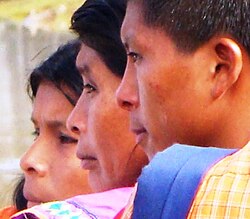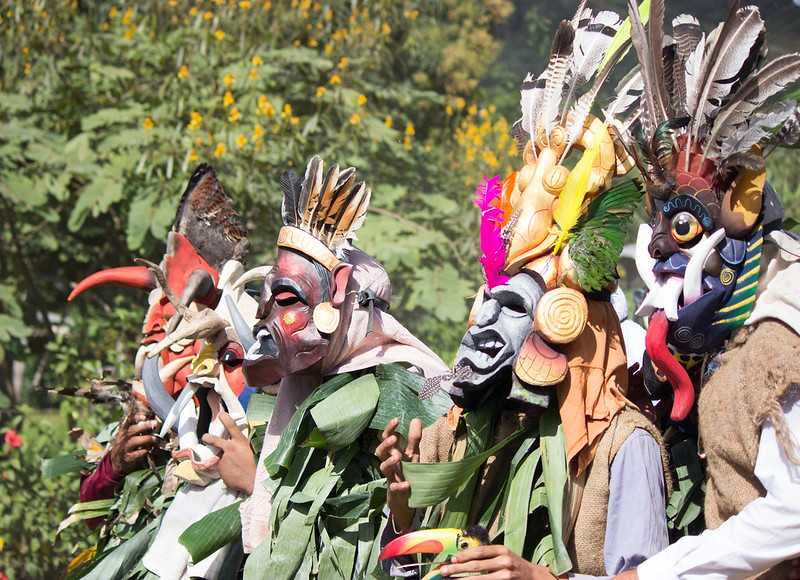Boruca people
The Boruca (also Brunca or Brunka ) are an indigenous people in Costa Rica. The tribe has about 2,000 people, most of whom live on a reservation in the Puntarenas Province in southwestern Costa Rica. The ancestors of the modern Boruca lived in several chiefdoms that ruled most of the Pacific coast of Costa Rica.
Like their ancestors the Boruca known for its arts and crafts, especially for their weaving and their distinctive painted balsa wood masks, which are popular among Costa Ricans and tourists as decorative elements. For the Boruca masks are an important part of the annual Danza de los Diablitos Ceremony ( Dance of the devil ), which is celebrated every winter since the colonization. The dance depicts the resistance of the Diablitos representing the Boruca, against the Spanish conquerors.
History
The Boruca belong to the group of the Talamanca Indians of southern Costa Rica and Panama. They are a mixed people, because today include not only those who already before the Spanish colonization so called themselves, many neighbors and former enemies, such as the Coto, Turrucaca, Borucac, Quepos and the Abubaes to the Boruca.
In 1939, the cultivated land of the indigenous population. Due to legislation by the national government law for their inalienable property In 1977, the indigenous law of Costa Rica was passed deeming the basic rights of the indigenous population. This law defined the term indigenous, introduced the self-management of the reserves and pretended limitations for land use within the reserves. Despite these laws are now more than half of the indigenous lands (based on all of Costa Rica) not in the hands of the indigenous population. Surfaces are eg road construction and illegal land sales. Thus, the planned dam would significantly tighten the Boruca indigenous population affected, since 8000 ha would be inundated by indigenous land.
Language
The Boruca have an indigenous language, which is also called Boruca or Brunka. She is a member of the family of Chibchan languages. At the same time it is also a product of the colonial period, but the modern Boruca is a mixture of different languages. The language is almost extinct, it only live a few older people who speak it fluently, 30 to 35 people speak non- fluently. Younger members of the community understand the language normally, but do not speak it. Children who attend the local school, learn there Boruca. For the vast majority of the Boruca Spanish is the native language and the only language they speak.
Geography
The majority of the people of Boruca tribe lives in the Reserva Boruca. This reserve is located in the canton of Buenos Aires in the Puntarenas Province in the South Pacific area of Costa Rica. The reserve is 138.02 km2 and is located in the Talamanca Mountains. The city of Buenos Aires is located approximately 20 km north.
Economy
The population of the Reserva Boruca lives mainly of peasant farming and selling indigenous crafts. They are best known for their masks which represent stylized devil faces. The masks are usually painted balsa wood or sometimes made of cedar and can be or unpainted. Textiles that are making the women with pre-Columbian looms, and other crafts, such as decorated calabashes, are also sold.










